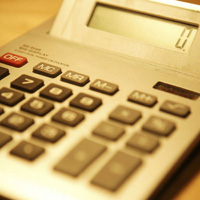The change in the standard rate of VAT from 17.5% to 15% which came into force on 1 December will prove an administrative hassle many small businesses could do without.
"A change in the standard rate of VAT may look simple on paper but the practical consequences of a change in the rate are considerable," says Frank Haskew, head of the ICAEW Tax Faculty.
"This is the first change in the standard rate of VAT for over 17 years and many businesses will have never had to deal with a change in the VAT rate, let alone having to implement it in such a short timescale."
- It is up to you whether you reduce your VAT inclusive prices to reflect the lower VAT rate. The government encourages businesses to pass on the benefit of a lower VAT rate to customers by lowering prices, but you do not have to do so.
- If you are a retail business that does not issue till receipts that identify VAT separately, you can continue to use these as before.
- If you issue receipts that identify VAT, you will have to change your systems (which might include changes to your tills and accounting systems) so that receipts reflect the new VAT rate. Similar changes will need to be made to any invoicing systems.
- Because the VAT rate is changing, it is very important for businesses to correctly identify the date of sale for VAT purposes, or ‘tax point'. This is usually the earliest of the date the goods were delivered to the customer; the date payment is received or the date the invoice was issued.
- However, the delivery date and date of payment can be
overridden by the invoicing procedures of the business. Under the VAT rules, if
the invoice is issued within 14 days after these other dates, that date becomes
the ‘tax point' for VAT.
Example: Winders Ltd agrees to sell double-glazing to a customer in early November. On 28 November the double-glazing is delivered to the customer's home. An invoice is issued on 3 December and the following day the customer sends a cheque for the amount due. VAT should be charged at 15%, even though the sale had effectively taken place before the rate change.
With the new rate, you would usually need to issue invoices at the new 15% VAT rate. But if you provided goods or services more than 14 days before you issue the VAT invoice (e.g. if you issue a VAT invoice on 1 December for goods or services provided before 18 November 2008), or you were paid before 1 December, you must use the old rate of 17.5%.
- When it comes to paying VAT to HMRC, you need to split the calculation of how much VAT you owe. You should do one calculation, as you would normally, using the old rate of 17.5%, for sales made up until 30 November and another calculation, using the new rate of 15%, for sales made from 1 December onwards. The totals are then added together and entered on the normal VAT return form in the usual way. The important thing is to keep track of what sales you make up until 30 November and then from 1 December onwards.
- If you are using a flat-rate scheme, your VAT rate will also change: the HMRC website has detailed information on the new rates. You will need to use the new rates for your sector from 1 December 2008.
If in doubt, HMRC's website contains detailed technical guidance and a series of questions and answers for both businesses and consumers. HMRC has also posted a further note explaining what to do where your supply spans 1 December (www.hmrc.gov.uk/pbr2008/measure1.htm).





